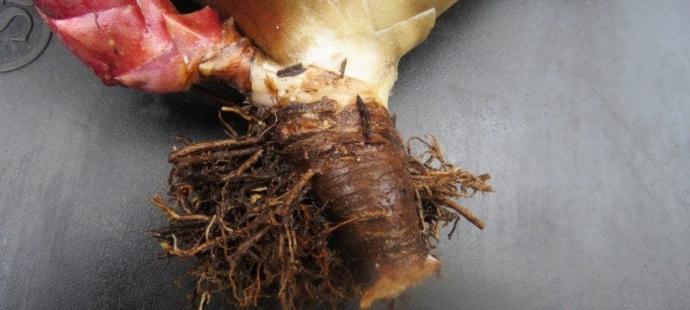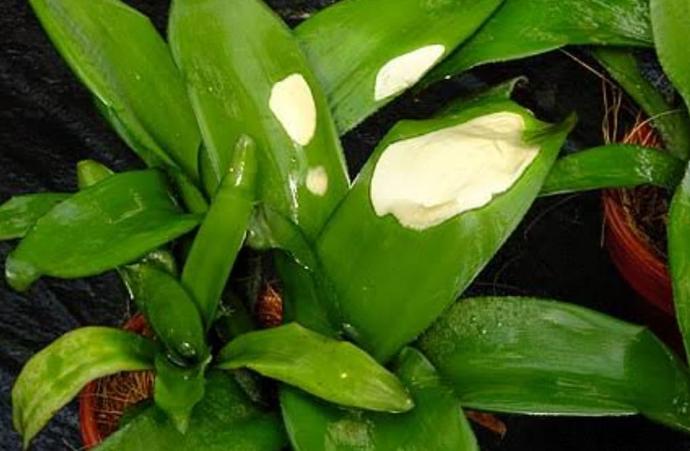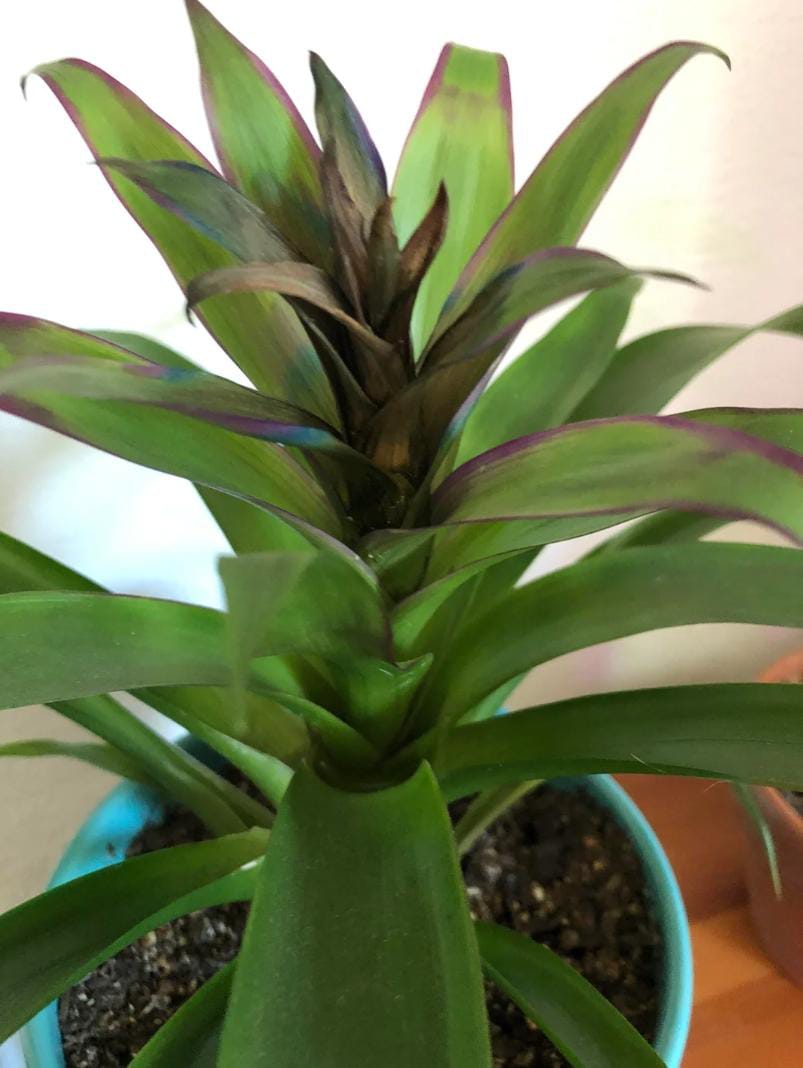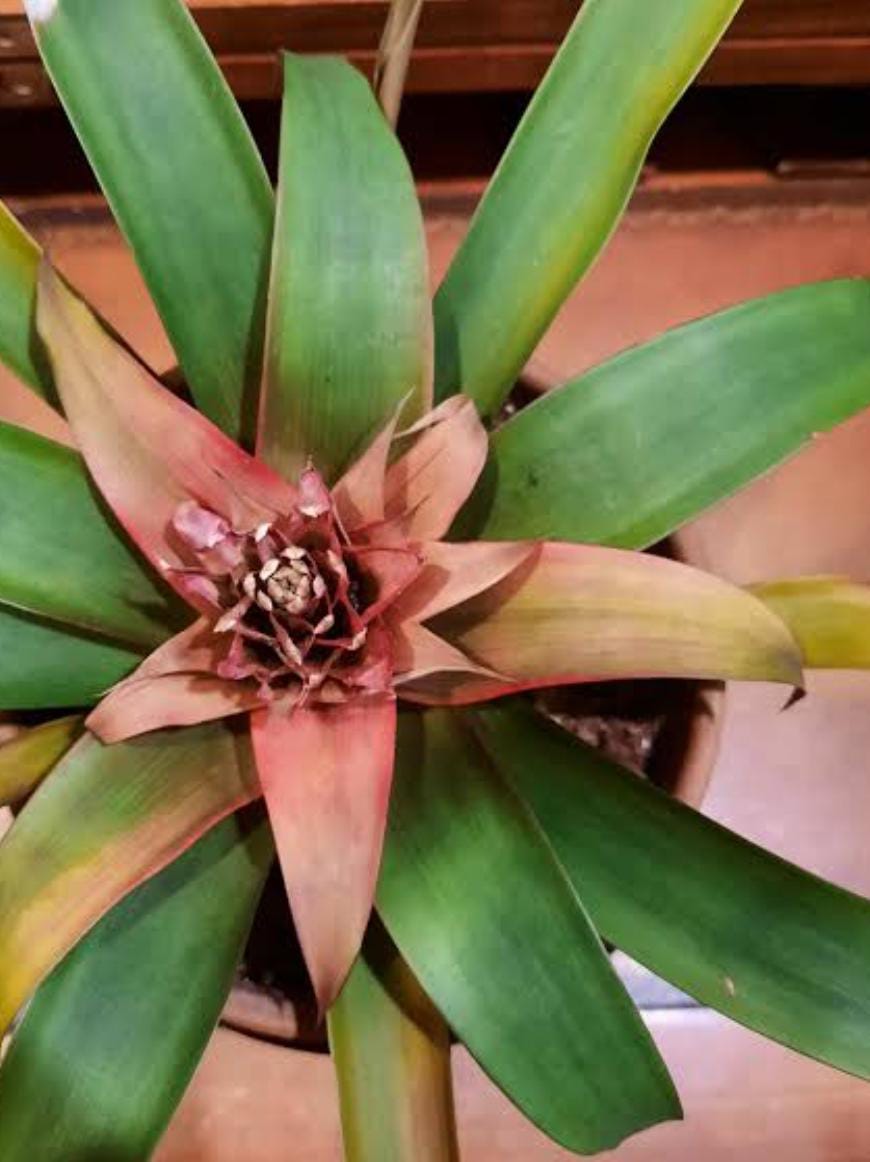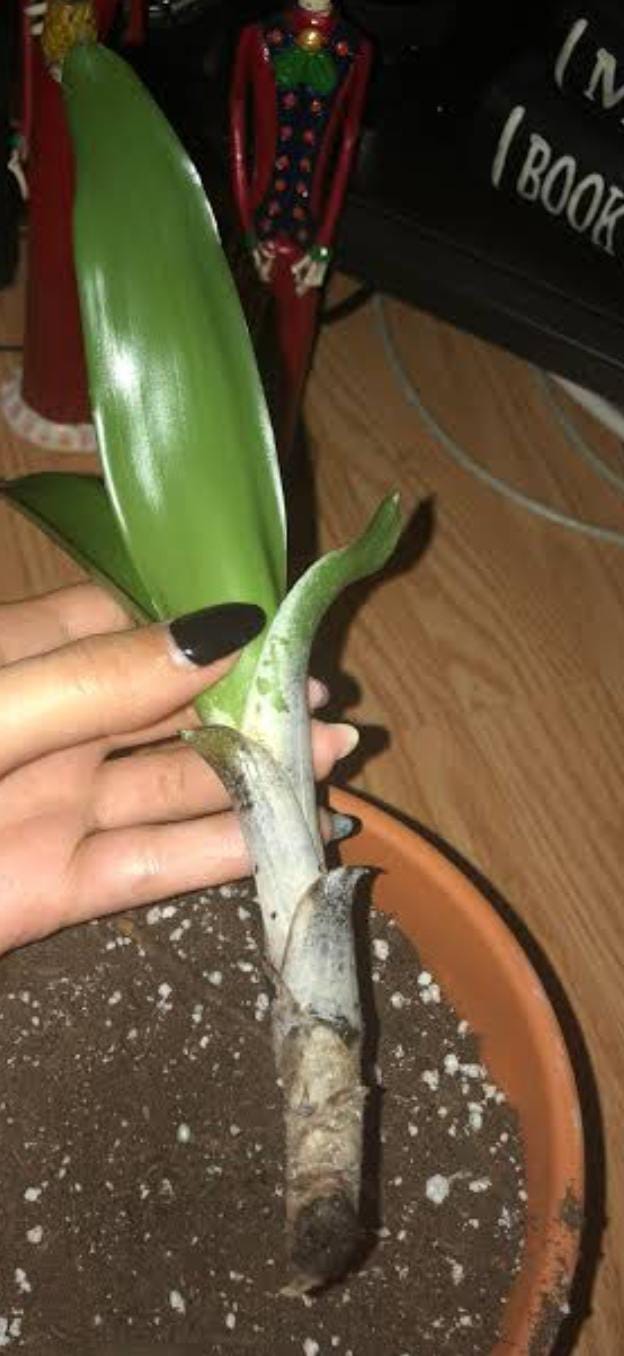Bromeliad Plant
Bromeliads are tropical plants that thrive in bright, indirect light and well-draining soil. Keep the central cup filled with water and regularly mist the leaves for humidity. Allow the soil to dry slightly between waterings.

Habit
Perennial
Height
30-90cm
Growth
Moderate
Soil
Well-drained mix
Shade
Bright , Indirect light
Moisture
Moist
Edible
No
Medicinal
No
Origin
South America
Climatic Condition
Warm, humid
Temperature (°)
20-30°C
Humidity (%)
60-80%
Potting media
Orchid bark
Fertilizers
Slow-release NPK
Watering
Moderate
Plant Weight
200-400g
Flowering Time
Varies
Soil Ph level
5.5-6.5
Water Ph level
6.0-7.0
Soil EC
Low
Yield Per Plant
Ornamental
NPK ratio
20:20:20
life Span
Perennial
Health Benefits
Air-purifying properties
Suggested Grow Media or Potting Mix ?
50% pine bark, 30% peat moss, 20% perlite
Suggested Fertigation/Fertilizers
Fertilize every 4 weeks with a balanced, water-soluble fertilizer.
Common Diseases and Remedies
Crown rot and Root rot
Purpling and reddening of older leaves
remove the diseased plants , solarize soil
HEALTH BENEFITS
· contains bromelain, which aids digestion and reduces inflammation.
· Some bromeliads improve air quality, indirectly benefiting respiratory health.
What Is An Bromeliad Plant ?
Bromeliads are a family of plants native to the tropics of North and South America. Europeans first learned about bromeliads during Columbus' second voyage to the New World in 1493, where pineapples were grown by the Caribbean tribes of the West Indies.
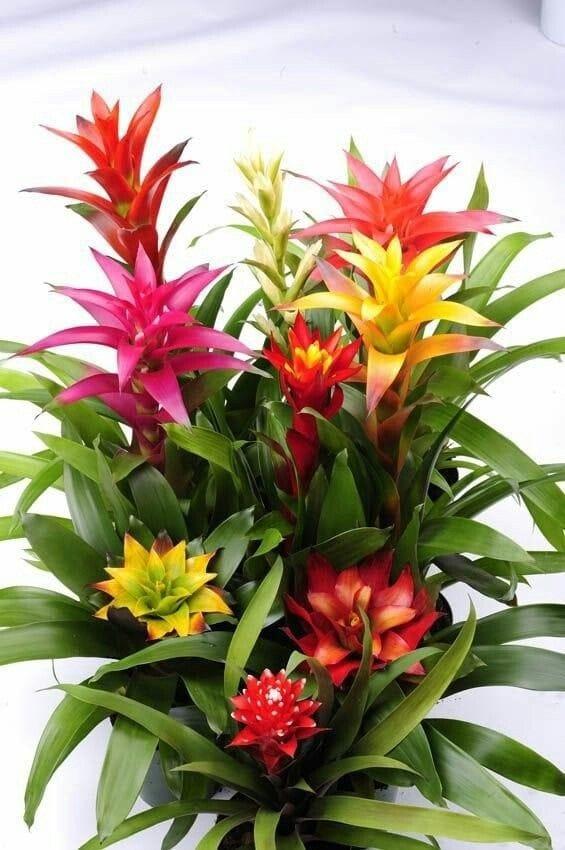
What Are The Different Types Of Bromeliad Plants?
1. Neoregelia
Neoregelia is a genus of about 90 epiphytes in the Bromeliad family. This type of bromeliad has flowers inside the plant.
2. Aechmea
The name comes from the Greek word ``echmea,'' which means ``spear,'' because the shape of the leaves resembles the head of a spear. Available in a variety of shades.
3. Vriesea (Vriesea spp.)
The indoor Vriesea bromeliad is an unusual but mysteriously beautiful plant. It has leaves and flowers.
4. Guzmania
Guzmania is a popular bromeliad because of its fountain-like inflorescence-like bracts that can be mistaken for flowers and rise proudly from the crown.
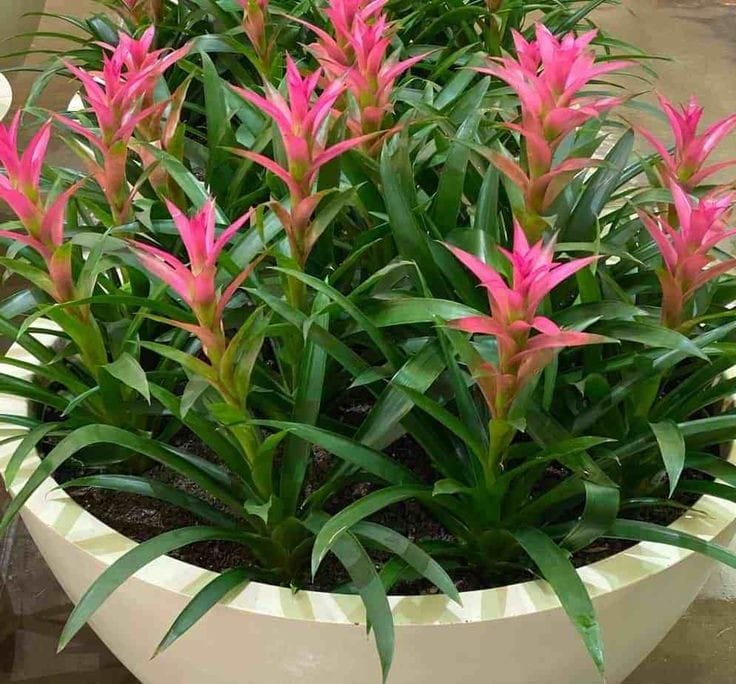
How to Care Bromeliad Plants ?
1. Location
Bromeliads grow in tropical and subtropical climates and are often used as outdoor ornamental bedding plants in these regions. Bromeliads cannot survive freezing, so they can only be enjoyed as houseplants in more temperate climates.
2. Sunshine
Bromeliads grow best in bright indirect light both indoors and outdoors. Do not place the plant in a location where the leaves will be exposed to direct sunlight as this may cause burns. But don't put it in a dark corner.
3. Soil
Bromeliads, like orchids, prefer loose, well-drained soil. You can also use a mixture of orchids for bromeliads (Gutierrez sometimes does this), or a mixture of peat moss, perlite, charcoal, and bark. Bromeliads generally take a long time to grow, so Gutierrez recommends purchasing bromeliads in the size you want.
4. Hydration
As with many other houseplants, overwatering will definitely kill your bromeliad. Although it likes moisture, it is usually watered only 2-3 times a month. For some, this is a difficult concept, but bromeliads only need water when they're dry.
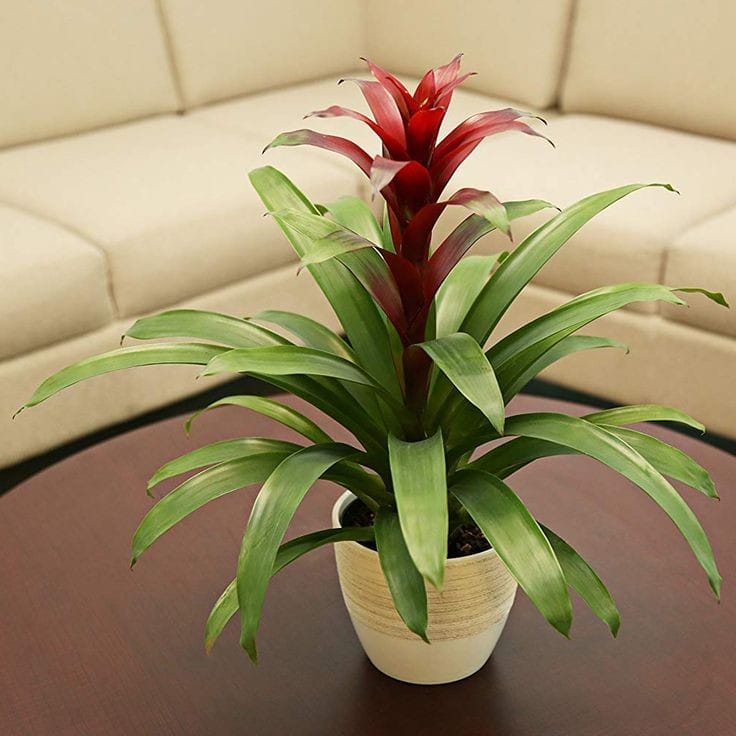
5. Nourishment
Fertilizer label, which flaunts his N-P-K ratio like a badge of honor. A 10-10-10 mix means equal amounts of each nutrient. However, bromeliads prefer a light touch of nitrogen so as not to affect their bright flowers. When choosing a fertilizer, look for one with a low first number.
6. Issues
Cultural Issues Plants exposed to sunlight dry out quickly. Bromeliads don't like wetlands, but they do need plenty of moisture because they are native to rainforests. Another common problem when placing plants in full sun is sunburn. The tips of the leaves are affected first, turning from brown to black.
What are the Benefits of Bromeliad ?
These plants are known for their ability to improve air quality by absorbing pollutants and producing oxygen. Additionally, it can create a relaxing atmosphere and reduce stress. Different bromeliad species offer a wide range of options to suit every taste and every interior
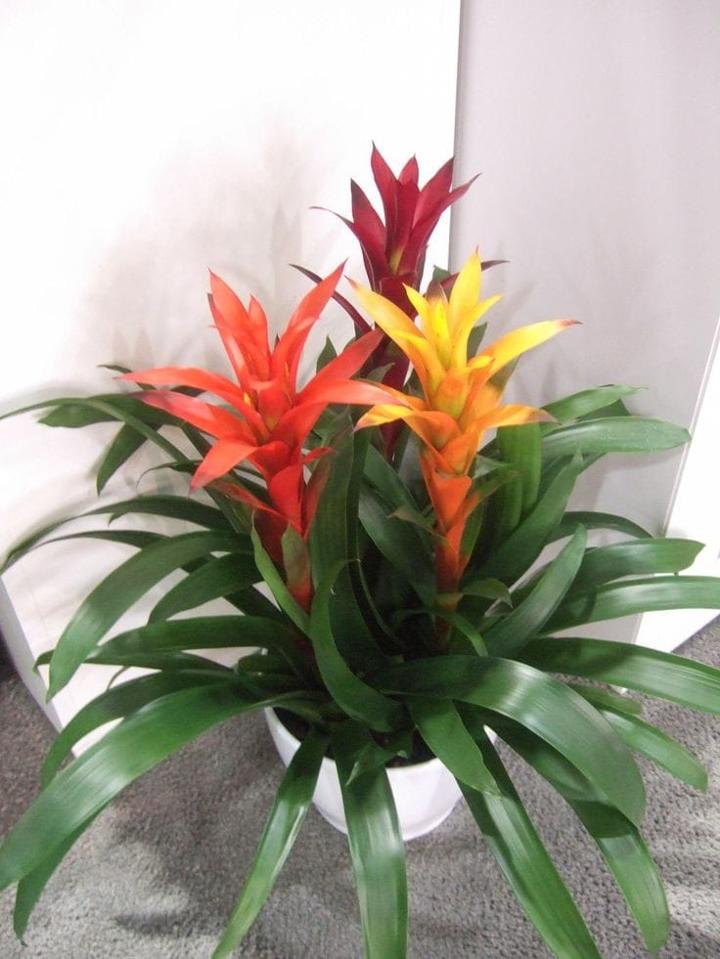
FAQs About Growing Bromeliad
1. Which bromeliads are good for you ?
Pointy leaves and bright flowers aren't just for show. They're busy removing contaminants like formaldehyde and xylene from your breathing space. Green Therapy: Caring for bromeliads is a stress reliever disguised as gardening. Practical mindfulness exercises to keep anxiety at bay.
2. Is bromeliad a lucky plant ?
Bromeliads are named after a Chinese pun and symbolize the approach of happiness. The flowers of this plant come in many fun colours, including yellow, red, and purple.
3. What are bromeliads used for ?
Bromeliads, including the whole fruit or another part of the plant, are primarily used as a food source. They are eaten as vegetables or prepared as drinks (fermented or non-fermented).
4. Do bromeliads purify the air ?
Bromeliad. When tested for its ability to absorb volatile organic compounds, bromeliads recorded an 80% purification rate for all but two VOCs tested. Another plus point: caring for bromeliads is also very easy, requiring only a small amount of water at a time.
5. What attracts bromeliads ?
Bromeliads are popular ornamental plants that are attractive and easy to care for. However, certain species, such as armored bromeliads, can store water between their leaves, making them perfect breeding grounds for mosquitoes.
